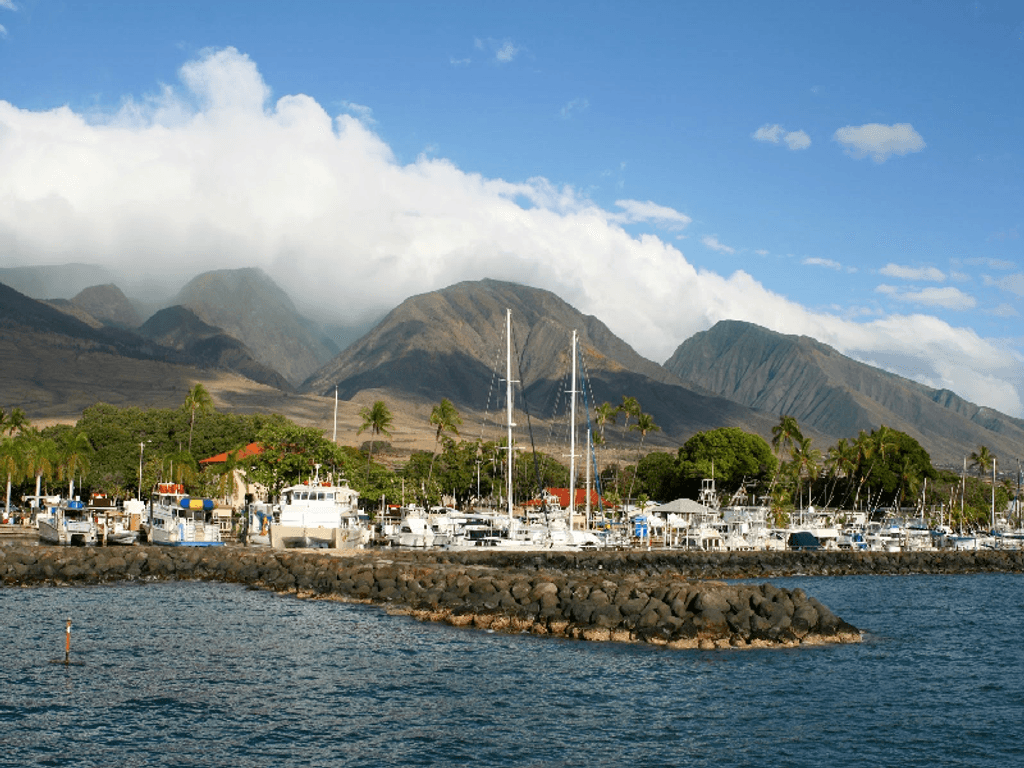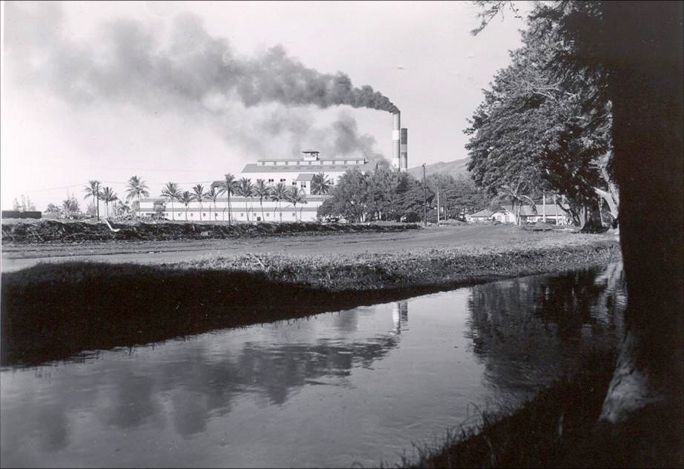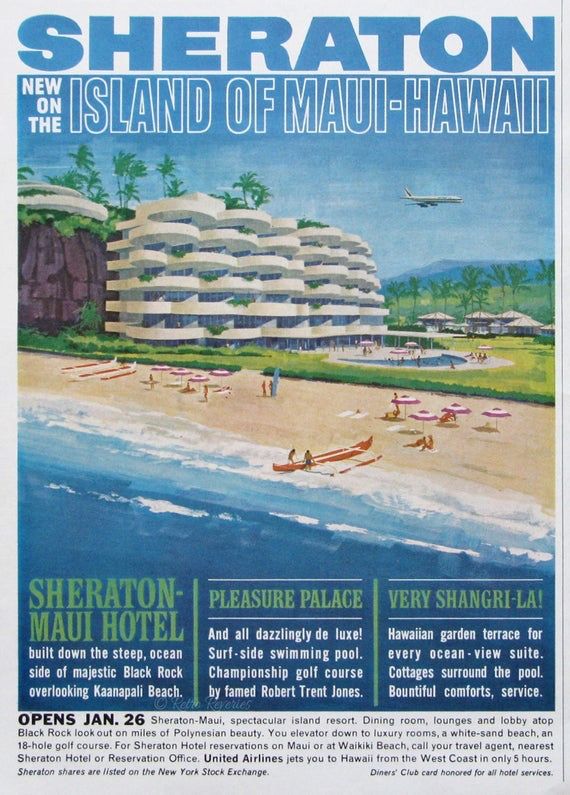
History of Maui Part 2
November 25, 2019
19th Century to Present Day
This blog post is the second in a series on the history of Maui. If you haven’t already, go back and read part 1.
As the 19th century began, Maui experienced a great wave of immigration from the United States by Christian missionaries. Arriving in the Lahaina Harbor, they mixed with a melting pot of transient sailors, businessmen, and native Hawaiians and greatly impacted Maui’s culture for generations to come. Historically a port town drawing people from all over the world, Lahaina and Maui’s West Coast would become a mecca for tourism - drawing travelers from around the globe as commercial air travel took flight in the 20th century.
Maui’s Missionaries and Historic Lahaina Town
The first missionaries landed on Maui in 1821 and continued to arrive in waves in the following decades. Missionaries advocated for the practice of Christianity over traditional Hawaiian culture and religious beliefs and encouraged women to cover up with the mu’umu’u. They also built schools and helped put the Hawaiian language in written form. Maui’s first school, Lahainaluna Seminary School, was built in the early 1800s. In 1834, the first Hawaiian Language newspaper was printed.
Missionaries came into conflict with sailors from the whaling ships who were known for their drunk and immoral behavior. As the main port on Maui and the capital of the Hawaiian Kingdom from 1820 to 1845, Lahaina was at the center of it all. Many historic buildings still stand on Lahaina’s front street from this time period, including the Hale Pa’ahao Prison, the old courthouse, and the Baldwin Home Museum. A giant banyan tree, planted in 1873, takes up an entire city block.
Leprosy and Disease
During the 19th century, diseases brought by the massive influx of westerners decimated the local Hawaiian population who had no immune defense against smallpox, measles, influenza, tuberculosis, cholera, and typhoid fever. In 1860 and 1861, an outbreak of Leprosy on Maui led to the creation of a Leper colony at Kalaupapa on the neighboring island of Molokai.
Great Māhele
In 1848, King Kamehameha III instituted the Great Māhele, a land redistribution act that made private land ownership possible for the first time. In the redistribution, one third of the land was designated for the monarch, one third for Ali’i, and one third for commoners. The concept of owning land was foreign in Hawaii. Under the Kuleana Act of 1850, Hawaiians were required to file a claim in order to obtain ownership of their land. Many failed to do so, resulting in the vast majority of Hawaiian land being owned by the state or sold off to business interests.

Sugar Plantations
As the 20th century approached, the sugar boom began in Hawaii, with sugarcane plantations cropping up across the islands. On Maui, the first sugar plantation was started in 1848, followed by Alexander and Baldwin in 1870. Claus Spreckels established the Hawaiian Commercial & Sugar Company (HC&S) in 1882 and built the Spreckelsville Mill, said to be the world’s largest sugar mill. For 168 years, the sugar industry was the driving force of Maui’s economy. As on other islands, the sugar plantations drew large numbers of migrant workers from Asia and beyond who brought with them their distinct cultures, religions, and foods. Today, you can visit Maui’s Sugar Museum to learn more about this definitive period.
Overthrow of Hawaiian Monarchy
In 1887, a new Hawaii constitution was adopted which included the establishment of a U.S. naval base at Pearl Harbor. In 1893, the Hawaiian Monarch, Queen Liliuokalani, was overthrown by a group of American sugar planters. While the overthrow took place on the island of Oahu, it’s effects rippled throughout the islands. Hawaii was annexed by the United States in 1898 and in 1959 it became the 50th U.S. state.

WWII
After the attack on Pearl Harbor in 1941, the United States entered World War II. During the war, Maui acted as a base for as many as 100,000 troops at a time. Many island residents served in combat. There is a memorial park in Haiku where the 4th Division of Marines trained while stationed on Maui. The Veteran’s Cemetery in Makawao has a monument honoring Maui’s WWII veterans.
Air Travel
Perhaps the biggest remnant of the war is the Kahului Airport, which was constructed as a Naval air base and was decommissioned after the war for commercial air travel use. Maui’s first airport was built in 1927 in Ma’alaea. With it’s dirt runways and close proximity to the West Maui Mountains, it was only suitable for small planes. In 1935, Pan American Airways offered the first commercial flight from the United States to Hawaii, from Los Angeles to Honolulu. For a long time, Maui was only accessible by small plane from Honolulu or by boat.
Tourism
Tourism increasingly became the focus of the island’s economy after the war. As flying became more affordable in the 1960s and 70s, increasing numbers of Americans and international visitors began coming to Maui to vacation.
Maui’s first luxury hotel, the Kuaiki Inn (now the Travaasa Hana Resort), was built in Hana in 1946, 20 years after the Hana Highway was completed. The Hana Highway, now a major tourist attraction was built by convict labor from the prison in Keanae. Although only 68 miles, the infamous road can take up to 3.5 hours to drive non-stop with it’s incredible twists and turns. It was initially constructed in order to connect sugar plantations and other agricultural concerns in Hana to Kahului for exports and labor.

Maui’s first resort, the Royal Lahaina, opened in Kaanapali in 1962, followed by the Sheraton in 1963. In old school advertisements, Kaanapali was referred to as the “Polynesian Riviera”. Vacationers could catch a private resort plane from Honolulu to the hotel landing strip and cruise around resort grounds in electric golf carts. To this day, Kaanapali persists as a world class vacation destination, with luxury resorts on some of Maui’s most beautiful beaches. West Maui’s coastline is also a favorite spot for humpback whales who migrate here seasonally every winter. In 1992, the Hawaiian Islands Humpback Whale National Marine Sanctuary was established, protecting waters between Maui, Molokai, and Lanai as a safe haven for these amazing creatures.
Today, West Maui is known as the ideal spot for vacationers seeking the best beaches, whale sightings, and luxury accommodations. Maui Resort Rentals offers access to many of the best vacation rentals at top resorts and residential communities from Honu Kai, to the Kaanapali Ali’i. Contact us for help finding your perfect rental in historic Kaanapali.